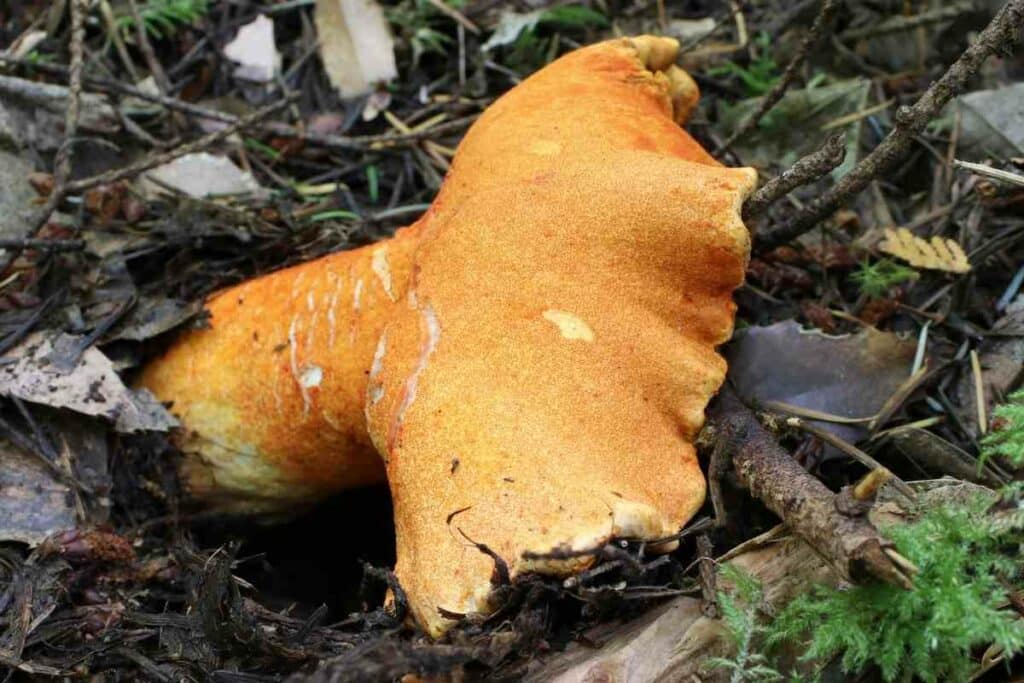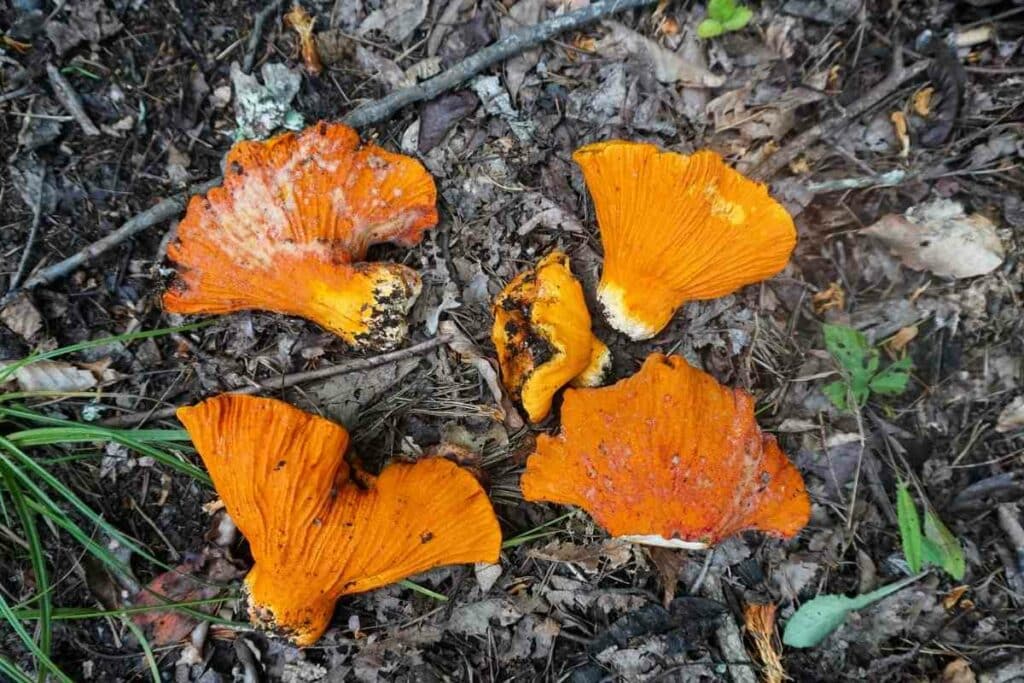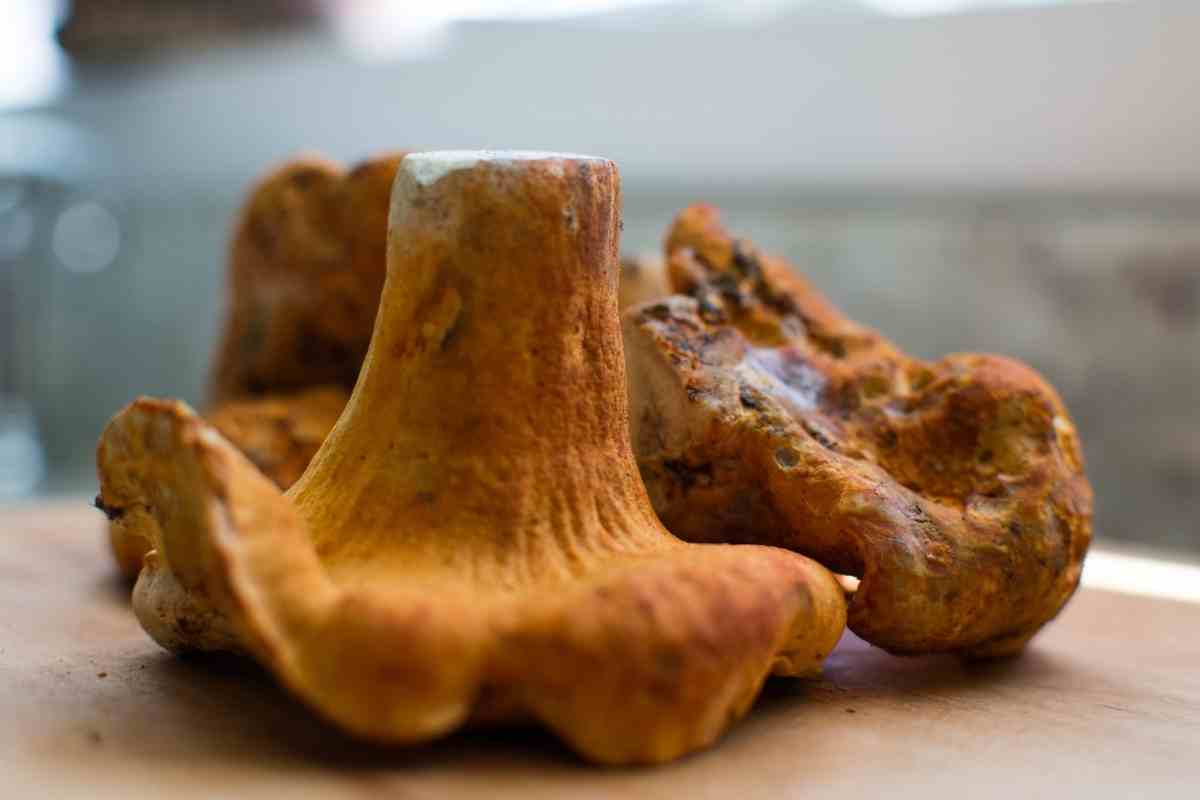If you don’t know, you are certainly missing out on the king of mushrooms. Well, in fact, not a mushroom at all because hyphomycetes lactifluorum, the lobster mushroom is a parasite.
Yes – you got it right – a parasite!
So the first thing you have got to know about growing lobster mushrooms is that it requires other mushrooms to grow.
As the fungi takes over, the mushrooms develop a characteristic “lobster-red” hue that gives this fungus its name.
H. lactifluorum thrives on the milk-cap and brittlegills fungi, that are prevalent in the forests of North America. Under the right conditions, these species are completely covered and indistinguishable from parasitic growth.
This transformation is not only physical but metabolic and genetic, creating a completely new entity!
You might have thought that an organism like this would be the last thing you’d want to eat, but lobster mushrooms are quite the delicacy.
Interestingly -They have a satisfyingly firm and dense texture with a seafood tang. It has widely foraged and you can even buy it in stores in the mid-west.
This edible fungus can be pricey, so being able to grow it yourself would save you $$$ and have you eating like a gourmet. Some artists use the orange-red hue of the lobster mushroom as a dye.
Lobster mushroom varieties
There are two types of lobster mushroom:
- Red lobster mushrooms are fungi that the parasite has fully transformed.
- White lobster mushrooms form when the transformation is partial before the color change intensifies.
Both types of lobster mushrooms have the characteristic aroma, texture and flavor.
White lobster mushrooms are rarer in the wild, as they are more difficult to spot when foraging.
Lobster mushroom benefits

If you are planting a garden, including lobster mushrooms will give your diet something new and exotic.
Lobster mushrooms are a nutritious and meaty addition to your meals and rich in the following nutrients:
- Fiber
- Copper
- Selenium
- Potassium
- Vitamins B, D, and K
- Zinc
You can grow lobster mushrooms in your backyard or homestead
Lobster mushrooms are a delicious, usually foraged treat, but with the right technique, you can get this delicious fungi growing in your backyard.
However, getting lobster mushrooms to grow is a little more than throwing down some rotting material and seeing what happens.
As this video explains, lobster mushrooms are some of the most difficult fungi to cultivate:
This is because you have to grow another mushroom species and then infect it with H. lactifluorum.
However, it’s not impossible.
Read on for the growing steps you need.
Where can I grow lobster mushrooms?
Lobster mushrooms are a North American native.
There is a similar species distributed across northern Europe and Russia.
In the US, you can forage or grow them in USDA Plant Hardiness Zones 4 to 7.
They are most common in the northwest of the US and central and southern Canada.
What is the lobster mushroom growing season?

In the wild, these fungi appear between late July and October.
Optimal soil temperatures for growth are between 55 and 59 degrees Fahrenheit (12.7 to 15 degrees centigrade).
How to grow lobster mushrooms
Step 1: start growing host mushrooms for H. lactifluorum
Remember, to get lobster mushrooms growing in your yard, master cultivating the host species.
Buy mushroom spawn of these host mushrooms and grow them in a clean environment.
These are the two species that you can choose to grow your lobster mushrooms from:
- Russula brevipes: this mushroom, known as the stubby brittlegill is edible on its own, but you can transform its flavor with H. lactifluorum inoculation.
- Lactarius piperatus: the peppery milkcap mushroom is another edible species that you can grow from spawn to develop lobster mushrooms. As the name suggests, it has a peppery taste.
Step 2: prepare a clean growing area for your mushrooms
The mushroom spawn need a clean, dark, nutrient-rich environment to grow.
It is important to keep everything as clean as possible so that the fungal growth does not become bacterially colonized.
A shed, cellar or cold frame is the ideal place to grow.
You can grow the mushroom spawn on mushroom compost mixed with:
- woodchips
- sawdust
- or wood

Step 3: wait for the mushroom mycelium to develop
The mycelium is like the root system of the mushrooms and will spread before the mushrooms spawn.
Once it proliferates, you can divide it to propagate more mushroom colonies.
Take pieces of mycelium and inoculate your prepared compost material, forcing them to grow.
Step 4: water sparingly
Growing mushrooms only need a light misting of water to keep growing healthily.
Place water in a spray bottle and spray them in the morning and evening.
Step 5: introduce hypomyces lactifluorum parasite
Once mushrooms start to develop, you should inoculate them with the hypomyces lactifluorum parasite.
This is will cause the transformation into tasty lobster mushrooms.
Without the parasite, you will only end up with a crop of the host mushroom species.
Where can I get hypomyces lactifluorum?
You can buy fresh Hypomyces lactifluorum Mycelium culture, spawn or spores from specialist online retailers.
Many specialists who serve mushroom farmers provide refrigerated cultures of this fungus that you can use:
Step 6: wait for lobster mushroom fruit bodies to develop
The fruitbodies of the lobster mushrooms will emerge as a colony is a variety of shapes and sizes.
Observe your crop carefully and harvest them promptly when fully fomed and richly colored.
Lobster mushroom pests and diseases
Lobster mushrooms have no notable diseases, but can be susceptible to pests that eat holes in the fungus and even nest within its flesh.
Slugs may also create cavities within the mushroom.
If the conditions the lobster mushrooms are growing in becomes unsanitary, they can become covered in bacteria or molds.
Here, the flesh of the lobster mushroom will be soft and gray and the outer surface may be an even deeper red.
These lobster mushrooms should be dicarded.
Harvesting and storing your lobster mushrooms
Cut the lobster mushroom fruitbody at its stalk, which is usually white, yellow or orange-red.
You then need to process your crop so that it can be eaten or stored safely.
Here are the key steps.
Remove surface dirt with a vegetable brush
Lightly dust off compost and other debris.
Be very gentle and avoid damaging the mushroom as this can cause it to deteriorate.
There may be cracks on the surface that can be carefully cleaned too.
Wipe down the mushrooms with a damp paper towel
This clean with a damp paper towel or cloth ensures that your fungi are thoroughly clean before you store them.
Store your mushrooms whole
Lobster mushrooms last longest when completely whole.
Place them in a clean cardboard box and store in a cool, dark place.
Dry excess mushrooms
You can prepare your lobster mushrooms for longer-term storage by drying them out.
Once desiccated, keep them in the fridge until you are ready to use them.
Using your lobster mushrooms
Lobster mushrooms are at their best when used immediately.
Do not eat the lobster mushrooms raw. You can prepare these fungi in a range of dishes by:
- Sautéing
- Braising
- Baking
The flesh of the lobster mushrooms stays firm after cooking and is delicious in soups, with pasta, or in stews.
Here are some delicious lobster mushroom recipes:
- Sauteed lobster mushrooms
- Lobster mushroom rolls
Butter-braised lobster mushrooms
Lobster mushroom bisque
Thin and crispy lobster mushrooms
Rounding up
Lobster mushrooms are definitely a gourmet treat and by growing these unusual fungi you can enjoy them as much as you want.
Save yourself the forage and start growing these fungi yourself.
